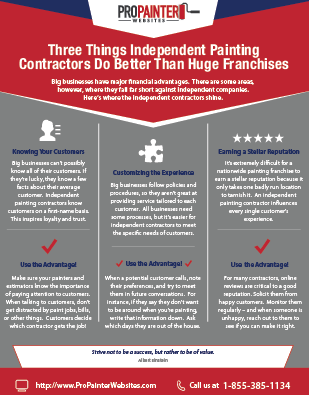Understanding Seasonal Influences On Commercial Outside Painting: Crucial Expertise For Success
Understanding Seasonal Influences On Commercial Outside Painting: Crucial Expertise For Success
Blog Article
Content Author-Regan Chaney
When you're intending a commercial exterior painting job, seasonal elements can make or damage your outcomes. You'll intend to take into consideration just how temperature and humidity influence paint application and drying times. Selecting the best period can ensure your paint adheres correctly and lasts longer. Yet which seasons are genuinely the very best for this sort of job? Let's explore the key elements that can impact your task's success.
The Impact of Temperature on Paint Application
When you're preparing a business exterior paint project, the temperature can dramatically influence how well the paint sticks and dries.
Ideally, you wish to paint when temperature levels vary between 50 ° F and 85 ° F. If it's as well cold, the paint may not cure properly, causing concerns like peeling off or breaking.
On the other side, if it's as well warm, the paint can dry out also rapidly, avoiding appropriate attachment and causing an irregular surface.
linked webpage should additionally think about the moment of day; early morning or late afternoon provides cooler temperature levels, which can be more desirable.
Always inspect Find Out More for the details paint you're using, as they frequently give guidance on the suitable temperature range for ideal results.
Humidity and Its Result on Drying Times
Temperature level isn't the only environmental element that affects your commercial external paint task; moisture plays a considerable function too. High humidity levels can decrease drying out times significantly, impacting the total top quality of your paint work.
When the air is saturated with wetness, the paint takes longer to treat, which can cause concerns like inadequate attachment and a greater risk of mold growth. If you're painting on a specifically damp day, be prepared for extensive delay times between layers.
It's important to keep track of regional weather conditions and strategy appropriately. Ideally, aim for humidity degrees in between 40% and 70% for optimum drying.
Keeping these consider mind guarantees your project stays on track and supplies an enduring coating.
Best Seasons for Commercial Exterior Paint Projects
What's the best time of year for your industrial exterior painting jobs?
Springtime and very early loss are typically your best bets. During these periods, temperatures are mild, and moisture levels are usually reduced, developing ideal conditions for paint application and drying.
Avoid summer's intense heat, which can trigger paint to completely dry too promptly, leading to inadequate bond and coating. Similarly, winter months's cold temperature levels can impede appropriate drying out and treating, risking the longevity of your paint task.
Aim for days with temperature levels between 50 ° F and 85 ° F for optimum results. Bear in mind to examine the local weather prediction for rainfall, as damp problems can wreck your task.
Preparation around these elements guarantees your painting project runs efficiently and lasts longer.
Conclusion
Finally, intending your commercial outside paint jobs around seasonal considerations can make a significant distinction in the result. By organizing work during the optimal temperatures and humidity degrees, you'll make certain far better attachment and drying times. Bear in mind to watch on local weather prediction and choose the correct time of year-- spring and very early fall are your best bets. Taking these actions will assist you attain a sturdy and expert coating that lasts.
